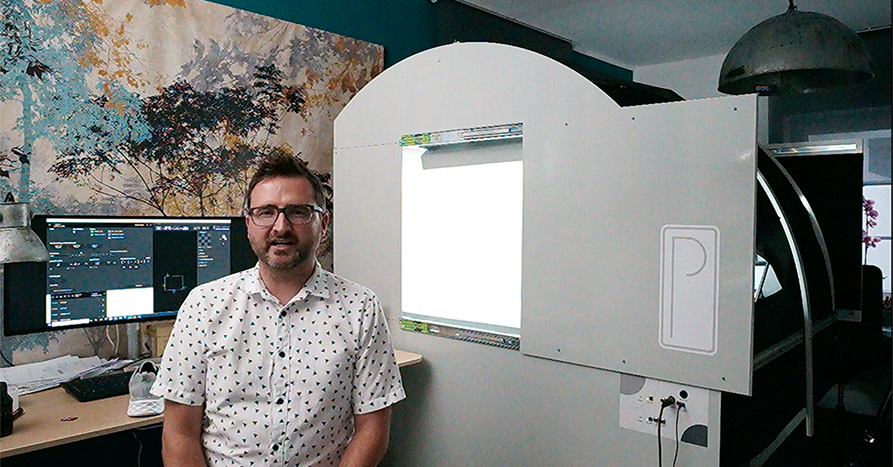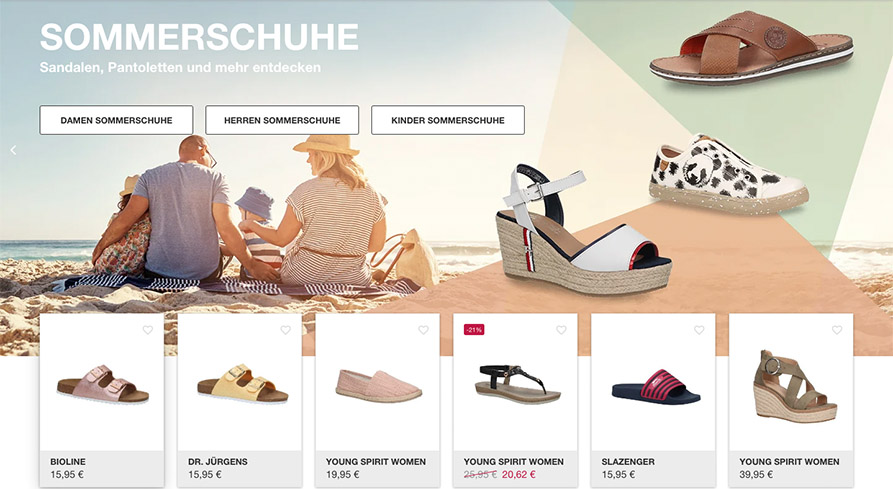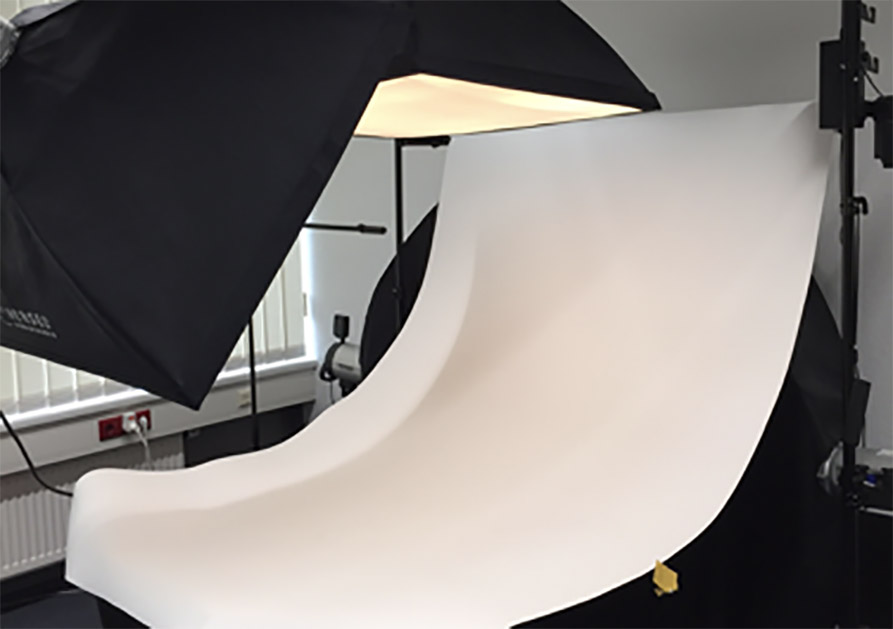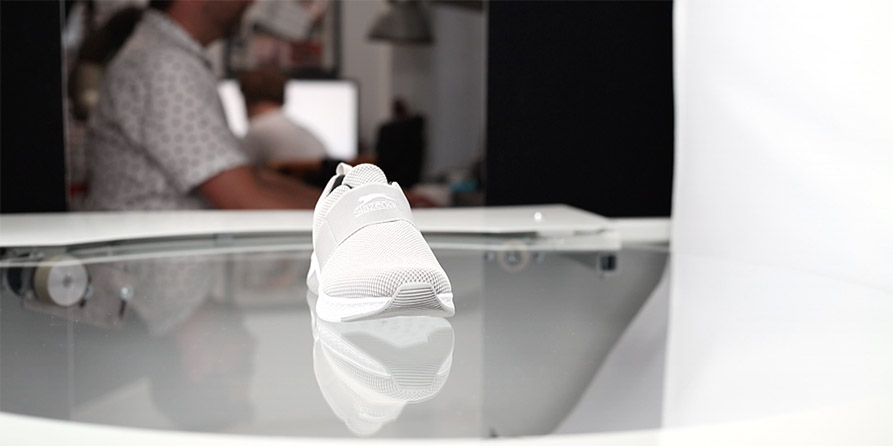
360° product pictures in 45 seconds including post processing
"Time is perhaps the most important factor
in e-commerce photography"
In the “Picture Instruments Customer Stories” we talk about the inspiring stories of our customers and partner companies who achieved their visions by using the “Picture Instruments Software”. Marco Uphaus founded the photo department of Hamm Reno Group GmbH and talks to us about developments in product photography. The Hamm Reno Group is one of Europe's leading shoe retailers, with a net revenue of over €500 million. Over the years, Marco and his team have photographed over 120,000 shoes and gained a great deal of experience.
PI: Hi Marco, you run the photo department of one of Europe’s largest shoe retailers, so we wanted to talk to you about your experiences in product photography. How did you get this position in the first place, since you are not a trained photographer in the classical sense?
Marco: Hi! I was always interested in technology and especially computers have always fascinated me. In 1997 I started my apprenticeship as a wholesaler and export merchant at Hamm Reno. Reno is a major company in the international footwear market and also an interesting company for wholesale and foreign trade, but it soon became clear that my strengths lie more in the area of IT and so I switched to this department during my apprenticeship
PI: How long did you work in IT?
Marco: I was in the department for ten years. Product photography became a topic in our company in 2007 and that’s when I noticed that our company spends an incredible amount of money on photo production. The Internet was not of great importance for us at that time, but even before that many shoes had to be photographed for catalogs and brochures
PI: How many shoes a year are we talking about in a year?
Marco: We work with two collections with at least 6000 shoes every year and often we also need pictures of the left shoe.
PI: How did you manage to photograph that many shoes?
Marco: The shoes were taken to external photographers, which in itself resulted in high costs for the pictures. In addition to that, there were further costs for the electronic provision of the pictures and of course for the transport of the shoes from A to B. That was the point when I thought there must be a more effective way to photograph shoes. It can't be that hard.
PI: How much did you know about photography back then?
Marco: Granted, until then I was the typical hobby photographer who took out his camera every two weeks. But from then on I realized that this could become interesting for me. That's why I simply asked our company if I could set up a photo department. Fortunately, the management quickly realized that my idea had great potential to save costs. So I was given free rein to develop the department.
PI: And how did you to start build up the photo department in 2007? What kind of equipment was available to you?
Marco: I started in the typical way with a light table and an acrylic cove, which was illuminated with three flash lights.
PI: Product photography is very complex. How did you learn the necessary skills?
Marco: In the beginning I taught myself a lot of things and was able to gain a lot of knowledge through trial and error. During my part-time job as a musician I got to know a photographer who gave me many tips. Through this photographer I was then able to establish further contacts with photographers, with whom I communicated via the Internet. I also kept on educating myself by attended workshops. The beauty of photography is that you make progress pretty fast, not like playing guitar where you have to practice forever. That is of course very motivating.
PI: That's true, once you understand the principles of photography, you quickly see improvements, which is of course fun. How has this affected the work of your department?
Marco: After a short time we were responsible for product photography as well as the social media images for the Facebook page and the website reno.de.

PI: But for social media and your website you also worked with models, right?
Marco: Yes, because of the small budget I recruited the models from my family and friends. The results were impressive, despite the cheap solutions.
PI: Speaking about the budget, what did your equipment look like? Did you also have to save money?
Marco: No, we used professional cameras and flash attachments. There’s no other way. But with the other things we tried and tinkered a lot to save costs.
PI: What have you tried?
Marco: In 2008/2009 the first online shops started to take pictures of their shoes on rotary platforms and integrate the images with 360° players on their websites. So we wanted to do that as well. I built our first rotary platforms myself from Kapa boards. Later I had glass cut and simply tried many things to be able to take 360° product photos myself.
PI: That sounds like a lot of time and labor. How many shoes could you photograph that way?
Marco: Absolutely, this process has only worked for certain shoes. We weren’t able to photograph the whole collection of 3000 shoes like this.
PI: This means that you still photographed most of the shoes with your classic light table?
Marco: Exactly. But even that was very impractical. An employee always had to sit next to the light table to turn the shoes by hand into the position in which they had to be photographed. That means that I sat behind the camera and the employee turned the shoes to the side and up and down.
PI: And how did you remove the background of the pictures back then?
Marco: We had seven employees who removed the background of the shoes manually. This was by no means a precise background removal process, but rather an imprecise one.
PI: So your team consisted of up to 10 people at that time and you were still not able to take pictures of all shoes?
Marco: No, we only photographed the shoes that were really needed for brochures, the website and social media.
PI: What happened next? Over time e-commerce also became increasingly important.
Marco: We contacted the manufacturer right away, when the first 360° machine for shoe photography came on the market and we ordered one. That made our work much easier. With the machine we could photograph 12 views within 12 minutes, which was of course the highlight at that time. I still wanted to further optimize our product photography process.
PI: What else did you want to improve?
Marco: It was still a great effort to release the pictures, despite the time gain, and the 12 minutes of idle time during the 360° photo round kept me busy. But then a new device came onto the market quite quickly, with which we could work three times as fast. We were then able to produce a complete 360° view of the shoe, with top and bottom view, in about 5 minutes.
PI: So you were able to increase your productivity considerably?
Marco: Yes, definitely and so we bought four of these machines. But this purchase was definitely necessary, because the increasing importance of e-commerce also increased the demands on the pictures and of course the amount of shoes that had to be photographed also increased. More and more exports were required, which means that every marketplace has its own style guides that determine whether the file is exported as JPEG or PNG, how the shoe has to be positioned in the image, what color the background should have, etc. With our systems it was a tedious programming work to meet all these requirements.
PI: And that's where Picture Instruments came into play
Marco: Exactly and luckily I already had your contact due to another project.
PI: Right, that was an interesting project. Would you like to talk a little bit about that?
Marco: For the Reno brochures with a circulation of 1 million copies, we removed the background of the photographed shoes and had external photographers paint a shadow under them. The company painted the shadows manually under each picture and this was very cost-intensive, so I searched for a better solution. I wanted to somehow get the real photography shadow onto the picture as a separate free-form layer. So I started looking for a software for background removal with backlight. The company Hensel then recommended your software Mask Integrator to me.

PI: You sent us a picture of your self-built background removal machine for shoe photos with shadows, so that we could better help you with your idea.
Marco: The cooperation with Picture Instruments was very intensive at that time and was very worthwhile for us. The "shadow machine" is unique and we still use it today.
This enables us to edit the real shadow on a separate layer. Then this project led to another one.
PI: Your machine for 360° product photography was also shown on the photo you sent us. We have been dealing with this topic for a long time due to our background removal software Mask Integrator and Chroma Mask, so the machine aroused a great deal of interest.
Marco: Suddenly it wasn't just about the "shadow machine" anymore. We quickly worked on two things at once and talked about possible concepts for a 360° shoe photography system, which exactly meets my wishes and requirements. My wife and I were also expecting our first child at the time, so we had thought that this would be a good opportunity to earn some extra money from home. The conceptual work very quickly became concrete after I formulated all my requirements.
PI: Which requirements were particularly important to you that were missing from your old systems?
Marco: Clearly, time and convenience! The most important thing for me was that I didn't have to touch the shoe several times and reposition it. With the regular devices you always have the problem that you can only take one additional photo from above and not another one from below. A photo of the sole and from above is pretty much always required, so the shoe must either be turned or laid on its side without Picture Instruments. But I wanted to touch the shoe only twice, to put it in and to take it out. So you need two more cameras in order to create a top view and a photo of the sole of the shoe with two clicks. A mirror function was also important to me, because when it comes to shoes, you usually need to photograph the right and the left shoe. If the right and the left shoe are identical, then you only need to take one picture. I save a lot of time with the push of a button, because only one shoe has to be prepared
PI: So now you have been working with our new device for several months. How much time does this save you?
Marco: A 360° view of the shoe without background only takes 46 seconds now and the entire process including putting the shoe in and taking it out takes less than 90 seconds.
PI: Reducing the photography and background removal process from initially 12 minutes to over five minutes and then less than 90 seconds can be called a successful collaboration.
And both additional photos are already included, contrary to the old systems.
Marco: It’s really a good collaboration! It’s simply priceless that my individual requirements for the machine have been fully implemented.
PI: Individualization is a USP of ours and other manufacturers often don’t offer that. Often an added value is created during the development and implementation of individualizations, which may solve the problems of many customers.
Marco: I think the Picture Instruments System for shoe photography is the best example. You can see how great the interest in the shoe industry has become.

PI: What challenges do you see in product photography in the future?
Marco: I could imagine that at some point it will no longer be enough to rotate the product on one plane and then we’ll have to either work with multi-level photo series or with real 3D data. You can already do multi-level series and your first tests to create 3D data with your devices look impressive. I, however, wish that the images can be converted in even faster time.
PI: With your new computer you could already gain a few seconds, but we are of course constantly working on improving our software and looking for new ways to optimize the product photography process. You’ll be one of the first people to hear of any new software updates.
Marco: I am excited and I am already looking forward to the updates.
PI: Thank you very much for taking the time to tell us a little about your everyday work.
Marco: I thank you and look forward to hearing from you again soon.
PI: Thank you Marco and see you soon!
Are you interested in 360° product photography systems? Feel free to contact us:
Jörg Hauenstein
Mobil: +49 (0) 173 - 71 910 00
e-mail: joerg@picture-instruments.com
Do you want to be informed about new stories and product photography solutions?
➔ Then sign up for the Picture Instruments newsletter
